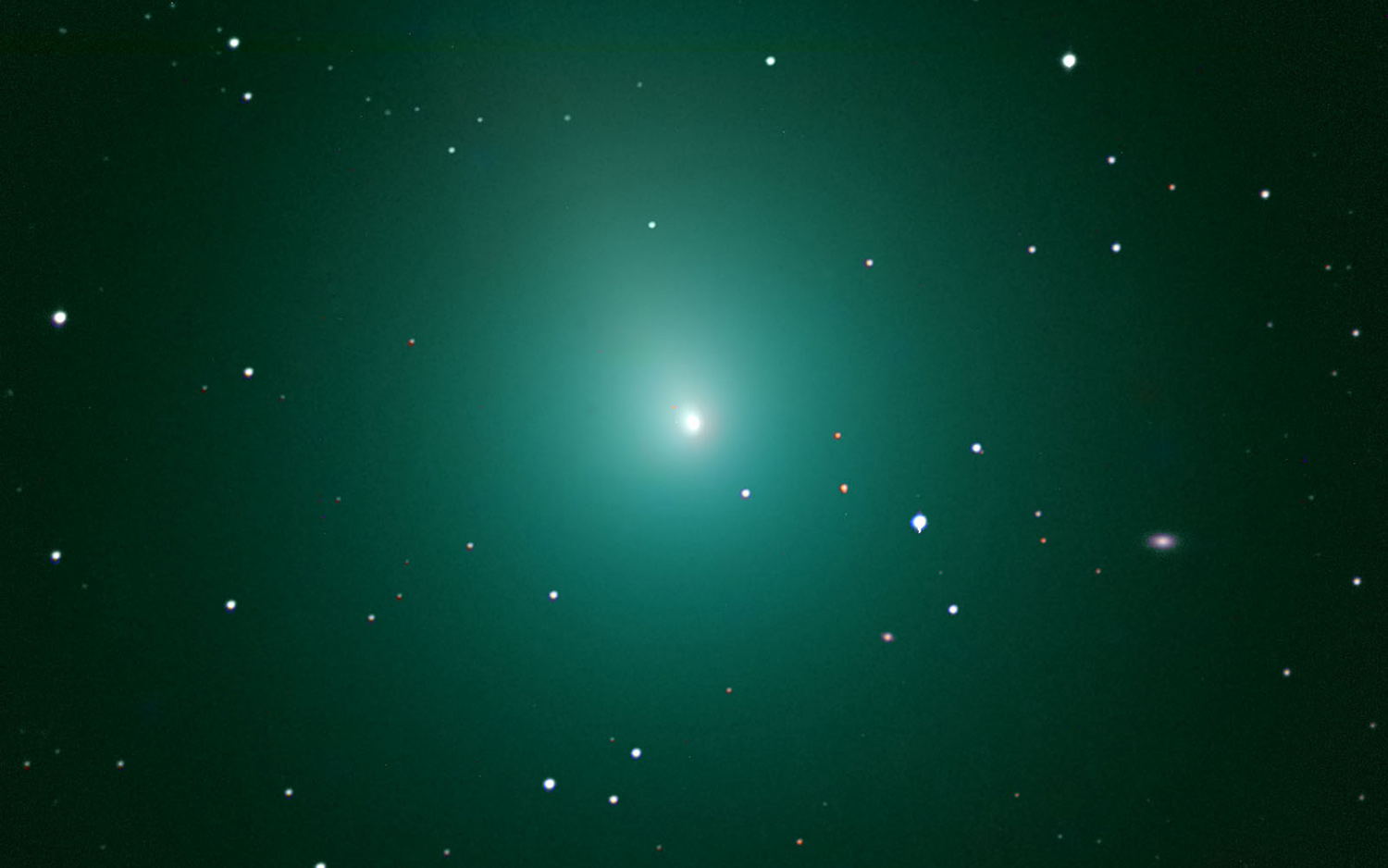Geminid Meteor Shower and Shining Comet 46P/Wirtanen Star in Slooh Webcast: How to Watch

The Geminid meteor shower will provide a shining backdrop for the approach of Comet 46P/Wirtanen on Thursday (Dec. 13), shortly before the object's closest approach to Earth in 20 years.
Following the two skywatching events, the online telescope service Slooh will host a webcast starting at 6 p.m. EST (2300 GMT) on Thursday. Experts will join the broadcast to discuss the meteor shower and its unusual source, as well as 46P/Wirtanen. The show will last until 10 p.m. EST (0300 GMT on Friday, Dec. 14). You can watch the webcast live on Slooh's website or here on Space.com, courtesy of Slooh.
You can see some truly amazing photos of comet 46P/Wirtanen by stargazers here. Then read our 2018 Geminid meteor shower guide for tips on how to see the "shooting stars" display yourself.
"With the moon setting just before midnight, conditions should be perfect for a classic Geminids meteor shower this year," Slooh astronomer Paul Cox said in a statement. "We'll also be pointing Slooh's telescopes to the peculiar asteroid 3200 Phaethon — the parent body of the Geminid meteors.
"Phaethon orbits the sun every 17 months or so — leaving a trail of debris behind it," Cox added. "When Earth passes through the trail, the sand-grain-sized meteoroids are vaporized in our atmosphere as spectacular meteors."
Cox will be on hand to discuss what meteors are made of and how meteor showers work, while Slooh astronomer Paige Godfrey and planetary scientist Raquel Nuno, of the University of California, Los Angeles, will discuss Comet 64P/Wirtanen as it passes through the sky, the statement said.
In addition, Slooh storyteller Helen Avery will discuss ancient observations of asteroids and meteor showers, Slooh representatives added.
Breaking space news, the latest updates on rocket launches, skywatching events and more!
To watch the meteor shower in person, go out before sunrise and look up. Plan to spend at least 20 minutes getting used to the dark and a longer period spotting meteors. The objects will appear to stream from a spot in the constellation Gemini, this meteor shower's radiant, but they can appear all across the sky. So, don't limit your field of view with a telescope or binoculars!
Gemini rises relatively early, so you can also catch good meteor views if you go out after the moon sets, at around 10:30 p.m. in your local time zone. Find the darkest skies you can, and settle in for a show; you may see around 1 meteor per minute, including both fainter streaks and bright fireballs.
Comet 46P/Wirtanen will be visible to the naked eye (or binoculars or a telescope) under very dark skies. The comet's closest approach to Earth will come on Sunday (Dec. 16).
Editor's note: If you snap an amazing photo of the 2018 Geminid meteor shower or Comet 46P/Wirtanen that you'd like to share with Space.com and our news partners for a possible story or image gallery, send comments and images in to: spacephotos@space.com.
Email Sarah Lewin at slewin@space.com or follow her @SarahExplains. Follow us on Twitter @Spacedotcom and on Facebook. Original article on Space.com.

Sarah Lewin started writing for Space.com in June of 2015 as a Staff Writer and became Associate Editor in 2019 . Her work has been featured by Scientific American, IEEE Spectrum, Quanta Magazine, Wired, The Scientist, Science Friday and WGBH's Inside NOVA. Sarah has an MA from NYU's Science, Health and Environmental Reporting Program and an AB in mathematics from Brown University. When not writing, reading or thinking about space, Sarah enjoys musical theatre and mathematical papercraft. She is currently Assistant News Editor at Scientific American. You can follow her on Twitter @SarahExplains.
